The third of my treasures from the transitional period between early and later Schwalm whitework is in its original condition. It is a bodice jacket that was, after the embroidery had been completed, dyed black and then waxed to create a chintz-like finish.
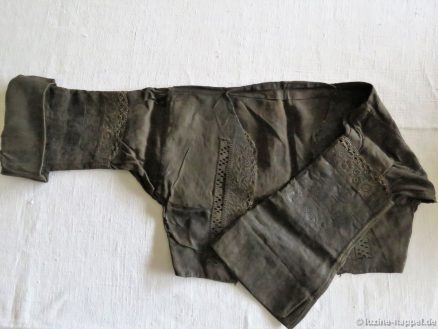
The piece is worked on old handwoven linen with a 14/18/cm thread count – a relatively coarse linen for this purpose. It is embroidered on the front edges and on the sleeve cuffs.
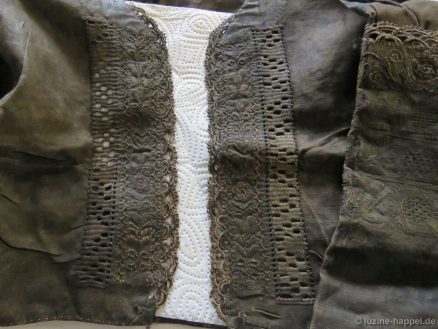
The front edges show a three-centimeter-wide border with ornamental embroidery and interlaced Straight stitches on both sides, a three-unit needle-weaving band, and needlelace.
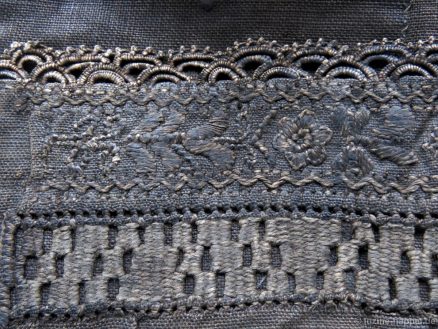
The sleeve cuffs show wider sections of embroidery. Four different small borders, each 3 cm high, were combined to create the design. Such an arrangement with separated small borders is rarely seen.
Only circle motifs were used. Chain or wide Stem stitches and additionally 2 short-2 long, Blanket stitch points, or Blanket stitch scallops outline the shapes. Leaves are made with Satin stitches.

The bottom edge is decorated with a 1.5 cm high needlelace
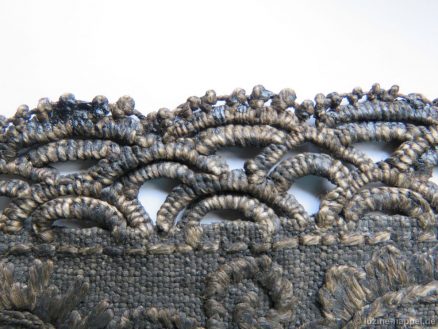
followed by a border showing stems, tendrils, and small circles inside some circle motifs stitched with Coral Knot stitches. These are the only Coral Knot stitches on the sleeve cuffs.

All five motifs of this border were embroidered without thread withdrawing. Two circles were filled with a Blanket stitch eyelet.
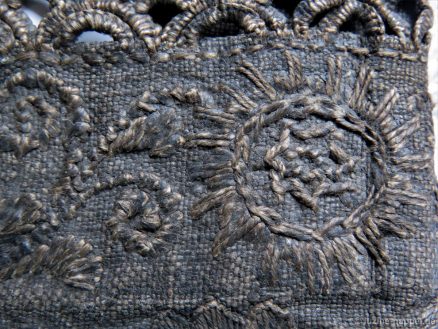
Three circles were filled with small circles stitched with Coral Knots surrounded by interlaced Straight stitches in the shape of a star.
The second border shows no Coral Knot stitches, but shapes with thread withdrawing. All withdrawn thread patterns of this piece, except one, are Limet filling patterns – this means cutting 1, leaving 3.
Two of the five circles have Four-Sided stitch patterns,
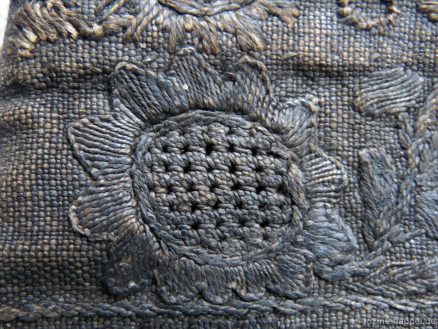
two have a combination of alternating rows of Four-Sided stitches and Cable stitches. This combination is rarely seen as Limet filling pattern.
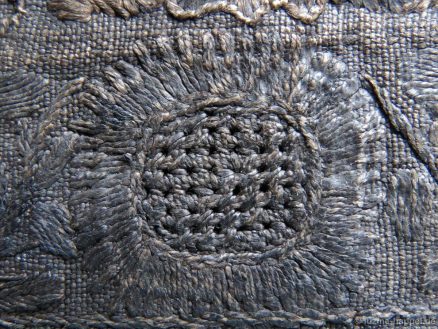
Also notable – well visible on top of the above shape – is the way of working 2 short-2 long. One round with densely worked Satin stitches of the same length is followed by a second round with pairs of Satin stitches worked between the stitches of the first round.
The fifth pattern is made with Rose stitches.
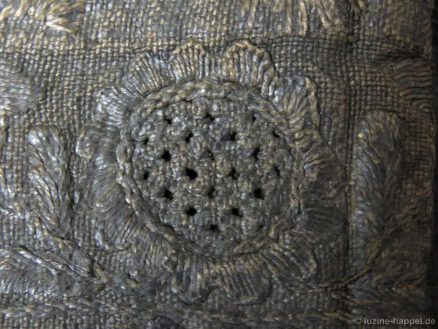
The third border shows shapes without thread withdrawing. All five circles have the same patterns – triple Blanket stitches stitched through the fabric, not lying on top.
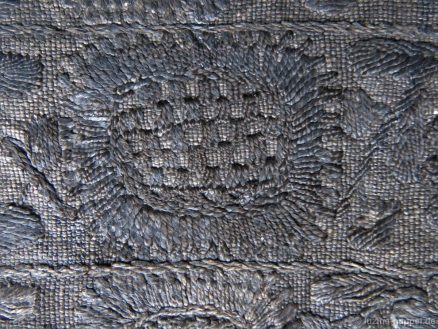
This border is bordered on top and on bottom with one row of wide stem stitches.
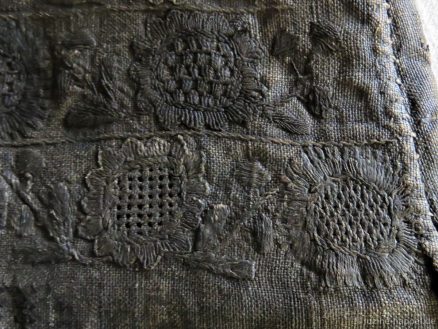
The fourth border includes six motifs. One shape (on the right in the above picture) is filled with a simple drawn thread filling pattern – Wave stitches. Two circles have Four-Sided stitch patterns, and three have Rose stitch patterns.

The initials CDNASI, divided by small Cross stitch ornaments, have been added but, unfortunately, no year.
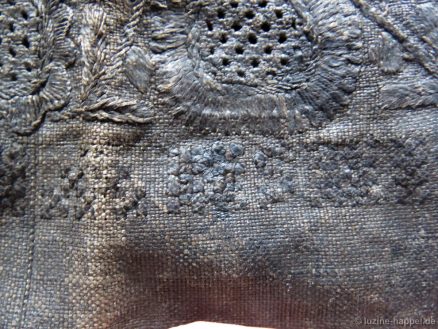
In this example, we see some elements that are typical of early Schwalm whitework: wide Stem stitches for stems and outlining some shapes, filling patterns made with decorative stitches, and filling patterns made with triple Blanket stitches.
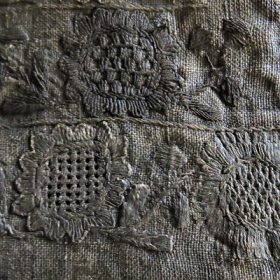


Leave a Reply